
Dear Members:
We begin this issue a little differently. You are used to seeing BOB founder Bob Marckini’s name at the bottom of every introductory memo. It was my decision this month, as Bob’s daughter, Deb Hickey, to “force” my father to put down the mouse, turn off his computer, and take a well-deserved trip to Key Largo, Florida with my mother to visit friends and bask in the sun. You see, my father has been working tirelessly—60-70 hours every week for as long as I can remember. Even when I was a child, and my father was a chemical engineer, he spent most of his time in his basement office, surrounded by paperwork. As a teenager, I remember him traveling across the world for business meetings, only to return home days later to piles of paperwork (Had they invented computers yet in the mid-80s?). Even as a young adult, while at college, I would call home and my father would be wide awake at midnight finishing up a project for the next day’s business conference.
Throughout my thirties and into my forties, only one thing has changed. About 15 years ago, my father took a detour when he was diagnosed with prostate cancer. At the time he was retired (or trying to be). And as you know, he underwent proton therapy at Loma Linda University Cancer Center in 2000 and as the story goes, he was very pleased with his treatment and vowed to keep a few fellow proton patients connected afterward. Fifteen years later and nearly 7,500 proton patients connected (now from all around the world), my father still spends most of his time at his desk. The one thing that’s changed? He’s truly passionate about the work he’s doing—however, he still spends 50-60 hours each week at his computer or on the phone. He researches articles about proton therapy and prostate cancer; reads books about prostate cancer; speaks to newly diagnosed men at all hours of the day and night; writes articles and stories for newsletters every single day, and much more. He takes short breaks to eat, watch a news program, or play the occasional game of golf. But still, he spends most of his life sitting at his desk.
Next month my dad will be 72 years old. All of his friends are retired. I’ve come to the point in my life where I have made a vow to do everything I can to give my father the time he deserves to enjoy life—spend time with my mother, his dog, their friends … boating, golfing, flying his toy drone quadcopter (How old is he?), and taking vacations. As a small step in that direction, I decided to write this month’s introductory memo. And, there will be more.
I thank proton therapy and Loma Linda University Cancer Center for giving my father a second chance at life, and now, I’d like him to live it. He has spent 15 years helping others to discover and learn about proton treatment for prostate cancer. He began this “ministry” out of the goodness of his heart so that others could have a second chance at life, without suffering through invasive treatments and without the agony of debilitating side effects. He did endless research and wrote a book so that others wouldn’t have to spend hundreds of hours reading through confusing and sometimes misleading literature.
Throughout my life my father has sacrificed himself for his family, friends, colleagues, and even strangers. I never dreamed his efforts would benefit people all over the world. Some of our members have called my dad their “hero,” and you know what? He’s mine too.
Bob will still be a big part of this organization and he will still contribute articles and stories, but I’d like to take the initiative, with the help of our friends at Loma Linda University Health who contribute articles and information, as well as technical assistance and feedback, to give my father more time to himself. Have fun in Florida, Dad—you deserve it.
As always, this issue is full of new and interesting information about proton therapy and prostate cancer, including familial links to developing the disease. You will learn how obesity is linked to colorectal cancer and also how heredity is involved. You’ll read another story about how advanced MRI imaging has helped one of our members. You’ll find diet and lifestyle tips including an article about a furry antidote for improving your overall health, as  well as an article about the critical importance of taking charge of your own health. And, as usual, you’ll read interesting and inspiring member stories and feedback, jokes, and a new (and easy!) brain teaser.
well as an article about the critical importance of taking charge of your own health. And, as usual, you’ll read interesting and inspiring member stories and feedback, jokes, and a new (and easy!) brain teaser.
As always, we welcome your feedback and suggestions for future newsletters. Just send an email to [email protected].
Deb Hickey
To print the BOB Tales newsletter or view the newsletter with a larger font size, click here for the PDF file.
in this issue
- Familial prostate cancer
- Obesity: a risk factor for colorectal cancer
- No colonoscopy after age 75?
- Teenager receives life-saving proton therapy
- Member benefits from advanced MRI imaging
- Is the BOB too evangelical?
- A personal thank you from Dr. James Slater
- What can decrease stress, help relieve chronic pain, lower your blood pressure, and increase your recovery rate after a heart attack?
- Taking charge of your health
membership

We added 750 new members in 2014 and 110 more have joined us in 2015. We have members from all U.S. states and 39 countries. Members represent all operating proton centers in the U.S. as well as four proton centers in Europe and Asia.
news report
A Question about Familial Prostate Cancer
The November 12, 2014, Johns Hopkins Prostate Disorders Health Alert addressed this subject. A reader asked the following question:
My father had prostate cancer and so did his brother. I am 56 years old. Are there any foods that I can add to my diet to make it less likely that I will get this disease?
In response to this question, Johns Hopkins pointed out that this individual had every reason to be concerned about an increased risk of developing prostate cancer. Studies at Johns Hopkins and the National Cancer Institute have shown that men with one close relative, such as a father or brother, with prostate cancer have a two-fold increase in risk of developing the disease. With two close relatives affected there is a five-fold increase in risk.
The article noted that although many studies have been directed toward the role of diet in prostate cancer risk, “the results have been inconclusive in terms of hard data.” However, there is a general consensus in the medical community that reducing the consumption of red meat lowers prostate cancer risk.
There is also some data that shows prostate cancer risk can be lowered through the consumption of cruciferous vegetables such as broccoli, cabbage, cauliflower, and brussels sprouts, as well as leafy greens such as kale and collard greens. Further, the article reported, there may be benefits to consuming lycopene, a compound found in tomatoes and best used in cooked form, such as tomato sauce.
BOB Comment:
We have a member in our group who is one of six brothers. We spoke with him last month. Five of the six have already been diagnosed with prostate cancer and treated—two chose proton therapy. We imagine brother number six is paying close attention to his PSA and DREs.
Obesity: A Risk Factor for Colorectal Cancer
This was the title of a recent Johns Hopkins Health Alert. Colorectal polyps are small, noncancerous clumps of cells that grow in the rectum and colon. Over time, some of these polyps can become cancerous. The older you get, the more likely you are to have them. And if you have family members with polyps or cancer of the colon, you are at higher risk of polyps and colon cancer.
Eating a lot of fatty foods, smoking, drinking alcohol, not exercising, and being overweight can also contribute to polyp formation and ultimately colon cancer.
Obesity has also been implicated with diabetes, hypertension, heart disease, and many forms of cancer, including colorectal cancer.
Researchers collected data on more than 74,000 people who received regular colorectal cancer screenings. They found that men who were obese, with a body mass index (BMI) of 30 or above, were at significantly higher risk than normal weight men of developing colorectal cancer.
No Colonoscopy after Age 75?
If you think you’re off the hook for a colonoscopy after age 75, think again. A new study reports that if you’ve never had a screening for colorectal cancer and you are older than 75, you may still need one.
Current guidelines from the U.S. Preventive Services Task Force suggest that a colorectal cancer screening isn’t typically needed for healthy adults after they reach age 75, but only if they’ve been adequately screened in the past. This latest study suggests a screening schedule for men and women ages 75 to 86 at average risk of colorectal cancer who have never been screened.
The researchers recommend the following guidelines for first-time colorectal cancer screening of adults with no other moderate or severe health conditions:
- Adults up to age 83 should undergo a colonoscopy, which involves inserting a flexible tube with a camera through the anus and rectum and advancing it through the entire colon.
- Adults age 84 should undergo a sigmoidoscopy, which involves a short, flexible tube that is used to inspect only the rectum and lower portion of the colon.
- Adults ages 85 and 86 should have a fecal occult blood test (FOBT), which involves testing the stool for the presence of blood.
The study authors recommend against screening persons in their late 80s or early 90s because they’re more likely to die from another disease before colorectal cancer takes its course. The study was published in the Annals of Internal Medicine (Vol. 160, p. 750) and posted in Colon Cancer on October 27, 2014.
Teenager Receives Life-Saving Proton Therapy
A 14-year-old girl from Ashford, Kent, England, is home after receiving life-saving proton therapy in the U.S. Chanel Alldis was rushed to London King’s College Hospital with a brain hemorrhage in 2013 and later diagnosed with a hypothalamic pilocytic astrocytoma.
After a series of MRI and CTI scans showing the recurring tumor on her brain, Chanel was referred to the ProCure Proton Center in Oklahoma. There, she received a nine-week course of proton therapy.

Following her treatment, Chanel said, “I am feeling better now, and everyone made me feel so welcome.” Chanel’s grandmother, Sue Lintini who flew to the U.S. with Chanel, said, “One hundred British children and families are treated in America each year. Not a lot of people have heard of proton therapy. I had never heard of it. It needs to be promoted because the treatment is marvelous!”
events
Recap: RV Tent Show, Quartzsite, AZ
In late January, Dr. Lynn Martell, D.Min, Director of Special Services at Loma Linda University Health, Aaron Laudenslager, Senior Development Officer at Loma Linda University Health, Matt Miller, Senior Development Officer at Loma Linda University Health, Tricia Murdoch, Senior Development Officer at Loma Linda University Health’s School of Medicine, BOB member and RV enthusiast Vern Haase of Omak, WA, and his wife Sandy, BOB member and avid outdoorsman Scott Wilcox of Morro Bay, CA, as well as 21 other BOB member volunteers, many with their spouses, set out to host a booth at the 32nd Annual Sports, Vacation & RV Show in Quartzsite, AZ. Their goal was to spread the word and educate attendees about proton therapy for prostate cancer and other illnesses.
Scott sent us a recap:
January in Quartzsite, Arizona, is like no other place on earth! The little town of 3,400 swells to over 1,000,000 from January 17th to 25th, with RVs as far as the eye can see. The main show was held in “The Big Tent,” with an estimated attendance of over 150,000, most of whom are retired and in the age group that may have experienced cancer or know someone that has.
This year there was a new booth in “The Big Tent”— the Loma Linda Proton Beam Therapy/BOB booth. Vern estimates that thousands of people were personally contacted by BOB members and LLUCC staff members and hundreds of copies of proton therapy brochures and information sheets were handed out. In addition, any man who told us he had untreated prostate cancer or a rising PSA was given a copy of Bob Marckini’s book, “You Can Beat Prostate Cancer: And You Don’t Need Surgery To Do It” as well as an LLUCC DVD about proton therapy.
Vern and Sandy Haase spent hundreds of hours on the phone, emailing, and making sure the booth was staffed for this event and deserve special thanks for their efforts. They are another great example of BOB advocates dedicated to helping others facing cancer to get the information that might save lives.
Vern told us that he and Sandy felt the event was an “invaluable way to educate men, women, and their loved ones on the merits of proton treatment at LLUCC.” Vern and the other volunteers met and spoke with thousands of people, young and old. They learned that some had never even heard of a PSA test. Vern said, “We encouraged and even consoled many who were either experiencing cancer themselves or had a loved one who was ill.”
An event attendee told Vern, “I don’t know what you guys are doing there, but normally the old guys sit around the campfire talking about new parts for their motorhome. This time everyone was talking about prostate cancer and proton therapy.”
The new “Team Proton” has great expectations for next year. They already have ideas for improving the booth, making new connections, and are working on gathering even more volunteers for the January 2016 event. If you’re interested in attending, please contact Vern Haase at 509-826-4931 or email [email protected].
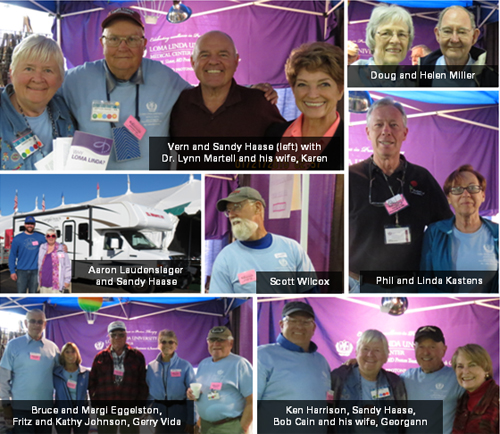
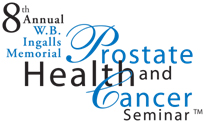
The 8th Annual Prostate Health
and Cancer Seminar
Register here for the 8th Annual W.B. Ingalls Memorial Prostate Health and Cancer Seminar: Prostate Health and Cancer: State-of-the-Art Care. The event takes place on March 7, 2015, at 8:00 a.m. – 2:30 p.m. at the Scripps Research Institute, 120 Scripps Way, Jupiter, FL 33458.
Proton Patient / BOB Member Reunion, Albuquerque, NM
When:
March 8, 2015, 2:00 – 5:00 p.m.
Where:
Sandia Presbyterian Church, 10704 Paseo del Norte N.E., Albuquerque, NM
Details:
Dr. Lynn Martell, D.Min, Director of Special Services at Loma Linda University Health, will discuss exciting news about Loma Linda, new clinical trials with the use of proton therapy, and detailed plans to transform the campus as part of Vision 2020.
Bring your spouse. This is also an excellent opportunity to invite friends who have been diagnosed with prostate cancer. Light refreshments will be served.
More information:
Contact Karla Montalvo at [email protected] or 909-558-7756.
National Proton Conference, Arlington, VA

Register here for the 3rd Annual National Proton Conference—Creating a Better Future for Cancer Patients Worldwide. The event takes place March 30 through April 2, 2015, at the Ritz-Carlton at Pentagon City, Arlington, VA.
Pacific Northwest BOB Reunion and Golf Event, Newberg, OR
When:
Thursday, June 11, 2015
Golf first tee time: 10:00 a.m.
Dinner and reunion: doors open at 5:30 p.m., dinner at 6:30 p.m.
Where:
Golf Event: Chehalem Glenn Golf Course, 4501 E. Fernwood Rd., Newburg, OR 97132
Dinner and reunion: Portland Adventist Medical Center, Education Center “A,” 10123 Southeast Market Street, Portland, OR 97216
Details:
The golf event is not a tournament—it is an activity and reunion with fellow proton therapy graduates. The cost is $40/player. This includes 18 holes with a power cart. The event is open to all BOB members and their guests.
The dinner and reunion will feature a program by Dr. Lynn Martell, D.Min, Director of Special Services at Loma Linda University Health. The full buffet, including two entrees (non-meat), salad, and dessert, is $17/person.
RSVP:
Download, print, and fill out registration forms for the dinner and golf event (Payment for golf may be included with dinner payment). Mail your registration(s) with payment no later than June 1, 2015. Checks should be made out to: Gary D. Brown with “BOB Event” in the memo and mailed to: Gary D. Brown, 115 Nicholas Way, Newberg, OR 97132-2353. For more information, if you need assistance with registration, or if you have questions, email [email protected] or call 503-538-8885.
spotlight on members
In Memoriam: Roy Butler
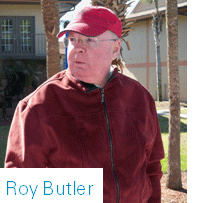
Over the years, we have often referred to the first six BOB members, a group of guys who met while in treatment at Loma Linda University Cancer Center. They were mostly from technical backgrounds; they fell in love with proton technology and Loma Linda; and they wanted to stay connected after treatment ended. Dr. Roy Butler was one of those first six members of the Brotherhood of the Balloon.
Roy passed away last month after a short illness unrelated to prostate cancer. Bob Marckini spoke with Liz Butler, Roy’s wife, as she was working with family members to prepare for a celebration of Roy’s life. Bob told her, “I used to say to Roy that if he had been my organic chemistry professor in college, I’ll bet I would have really enjoyed the course.” Roy was a professor of organic chemistry at Norwich University in Northfield, Vermont before he retired a few years ago. He loved teaching, so much so that he continued teaching his students long distance while in treatment at LLUCC.
After completing his treatment in 2000, Roy decided he wanted to spend more time around Loma Linda studying proton technology. He took a sabbatical from Norwich University and spent a year in Loma Linda. To fill the rest of his time, he persuaded the University of Redlands to hire him to teach organic chemistry. Roy was in heaven.
Later, Roy produced a brilliant paper about proton therapy titled, “The Patient Proton.” The word “patient” in the title refers to the fact that the proton particle is “patient” as it enters the body and releases its energy at just the right time and precise location. “The Patient Proton” has been a link on the ProtonBob.com website for more than 12 years. If you haven’t read it, we highly recommend it.
Roy served on the Loma Linda University Medical Center International Advisory Council for several years. He volunteered to be on the BOB proton patient reference list, making himself available to speak with dozens of prospective patients every year. Most of those he spoke with chose proton therapy for their prostate cancer after experiencing Roy’s passion for the technology and the medical center he loved.
Roy was a beloved husband, devoted father, and grandfather. He touched hundreds of people in his lifetime—family, friends, and students. All of their lives were better as a result of knowing him.
Roy passed away peacefully at his home on January 14, 2015. He will be missed by all of us.
Member Benefits from Advanced MRI Imaging
Few articles have generated more member feedback than one we wrote in our December 2014 issue. The title of the article was, “Advanced MRI Scans: A 'Game Changer' in Prostate Cancer Testing.” It was about the drawbacks of today’s conventional “blind” prostate biopsy, and the benefits of new, state-of-the-art imaging technologies that help doctors pinpoint tiny tumors in the prostate prior to a biopsy.
Many reported to us they had multiple biopsies over several years before their cancers were detected. They told us they wished they had had access to these advanced technologies so their cancers could have been detected much earlier. One member told us he passed our newsletter on to a friend who located a doctor who performed the advanced imaging. As a result, fewer biopsy samples were required, and the cancer was found on the first biopsy.
Last month another member had this to say:
I read with interest the article regarding the use of advanced MRI imaging to diagnose prostate cancer.
Between 2006 and 2011, I had five biopsies all of which proved negative for cancer. I also had a PCA3 test, which also proved negative.
Finally in July 2011, with my PSA continuing to rise (14), I asked my urologist at UCSF Medical Center if there was another way to definitively diagnose whether or not I had prostate cancer. He mentioned UCSF was doing trials using MRI to identify possible cancerous areas to be followed by an in-hospital biopsy of the suspect areas. Fortunately I was able to get the MRI and it showed two areas of possible cancer on my prostate. The subsequent targeted biopsy proved positive with Gleason scores of 6 and 7 respectively.
Biopsies alone are literally stabbing in the dark with no assurance of finding anything. This just leads to anxiety, not knowing for sure if you have cancer. Watchful waiting (active surveillance) could have been deadly for me!
I opted for proton therapy at Loma Linda University Cancer Center in September 2011. Today my PSA is down and holding. I am a firm believer in using the MRI to help diagnose prostate cancer.
BOB Comment:
If you want to learn more about some of these advanced imaging technologies, read “Prostate Cancer Breakthroughs 2014” by Jay S. Cohen, M.D. We reviewed this excellent book in our August/September 2014 newsletter.
Member Feedback: BOB Too Evangelical?
One BOB member wrote: Your BOB Tales newsletters are too evangelical. I’m an atheist and am offended by the mention of God in the BOB Tales newsletters.
BOB Response:
Bob and Deb were brought up in a Christian home. Faith has always played an important role in their lives. Bob’s experience of treatment at Loma Linda University Cancer Center and its “Make Man Whole” motto had a profound impact on him and his wife, Pauline who, at the time were Catholic and Methodist, respectively. Loma Linda University Health is a Seventh-day Adventist institution committed to caring for every patient—body, mind, and spirit. Patients of all faiths, and even patients of no faith, have reported a profound spiritual experience while in treatment.
The Brotherhood of the Balloon (BOB) was founded out of that experience. Six men, who bonded during the eight weeks of treatment in 2000, agreed to stay in touch, both with each other and with the institution that provided the healing and the inspiration to stay connected. Thus the BOB was formed.
Interestingly, the initial few BOB members were from different faiths, Christian and non-Christian. Yet they all agreed on one thing about the Loma Linda University Cancer Center: “God is in that place.”
So, our organization was borne out of an institution that puts God first, and much of that influence shows up in our newsletters. So, it looks like we are guilty as charged.
Incidentally, we’ve been criticized for this only twice in 14 years.
Member Feedback: Paying it Forward
One BOB member wrote:
Thank you for all the valuable information on your website. That and Bob Marckini’s book gave me all the information I needed to make my treatment decision. My treatment is over, my PSA is dropping fast and I feel great. I will be using the BOB PowerPoint presentation next month to educate others at my support group meeting.
BOB Comment:
The BOB PowerPoint is available to all members—just send an email to Deb Hickey at [email protected] for an electronic copy.
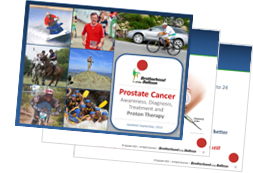
The BOB PPT presentation is intended
to 1) educate people on prostate cancer awareness, detection, and prevention;
2) help people understand the prostate cancer diagnosis; 3) provide an overview
of the major treatment options; 4) provide information about proton therapy; and 5) encourage people to become educated and proactive in the treatment decision-making process. Detailed speaker’s notes are included.
Member Feedback: The Balloon Bookmark
New BOB member John Gillam sent us the following note: Bob’s book gave me the courage to choose proton treatment.
The book and John’s treatment experience inspired him to design and print a bookmark about his experience with proton therapy. On the front of the bookmark are three words: life. hope. cure. On the back, John composed a short poem:

Have you ever had a friend who was cold to the touch and didn’t care about you very much?
Have you ever had a friend who was long and round and always seemed to be around?
Have you ever had a friend who never smiled and bothered you all the while?
Have you ever had a friend who hurt you sometimes but never seemed to mind?
Have you ever had a friend who always said “no” every time you wanted him to go?
If so, you know my new friend … Mr. Balloon.
If you’d like one of John’s laminated bookmarks, send $1.00 and a self-addressed stamped envelope to John Gillam, 1614 Areca Palm Dr., Port Orange, FL 32128.
making a difference by giving back
“We make a living by what we get; we make a life by what we give.” — Winston Churchill
Last month we wrote about Ted and Shaunie Smathers earmarking a significant portion of their estate to the Dr. James M. Slater Chair and the Robert J. Marckini Chair on their passing. Both of these endowed chairs support proton research at the Loma Linda University Cancer Center. Dr. Lynn Martell notified Dr. James Slater of the planned gift, which prompted him to write a letter to the Smathers expressing his thanks and appreciation. With Dr. Slater’s permission, here is an excerpt from his letter:
Dr. James Slater Responds
I understand that this gift is not an immediate one, and will occur only upon the passing of you and Mrs. Smathers. I thus hope that it will be a long time before our institution realizes the monies that will be used for research. As you note in your letter to Lynn, however, the mission of studying ways to optimize proton therapy for patients will continue long after both of us have passed on. Your gift will aid in that endeavor.
Meanwhile, I am glad to note that you recently passed the ninth anniversary of completing your proton treatments at LLUCC. For me, knowing that patients benefit from our work is my greatest reward, and thus seems only fitting that I am writing this letter on Christmas Eve.
Research is the foundation upon which all advances in medicine are based. That was true when our proton center opened nearly 25 years ago, and will be true for as long as we continue our work. At present we are exploring many new avenues to use protons more effectively for patients with a large variety of cancer and non-cancer presentations. These include ways to benefit patients with disease that we did not treat when you were a patient here nine years ago. The Slater and Marckini Chairs represent focal points for this research, and I deeply appreciate your recognition of that fact.
Thank you again for your generosity. Patients that you and I will never know will gain health and happiness from it.
“I Just Want to Do My Part”
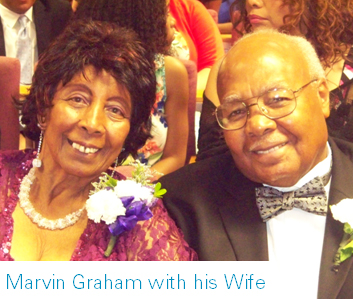
We received a special message from BOB member, Marvin Graham. He wrote to tell us that he was happy and thankful for his proton treatment at Loma Linda University Cancer Center and although he didn’t have any “elaborate degrees” or “a large social security amount,” he wanted to give back to the institution and the treatment that saved and preserved the quality of his life. “I drive an inexpensive car and I’m a painter by trade,” Marvin told us. “And, it’s important to me to give back.”
Marvin recently began donating $20.00 per month to support proton research at LLUCC. “I don’t expect any kind of special recognition; I just want to do my part,” Marvin said.
Marvin’s last PSA was 0.2 (PSA before treatment = 25.2). He’s 76 years old, feeling great, and expects to be around “much longer” thanks to the proton therapy he received. “My treatment has given me the privilege to see my grandchildren grow up.” What could be more important than that?
Still Thankful after 13 Years
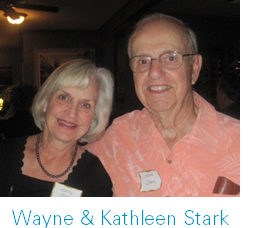
BOB member Wayne Stark (Gig Harbor, WA), now in his 80s, spent the latter part of 2001 receiving proton therapy for his prostate cancer at Loma Linda University Cancer Center. “I had no major side effects,” he told us. “The few I experienced were minor. My wife, Kathleen, and I enjoyed our time at Loma Linda.”
Thirteen years later, Wayne is still symptom-free and feeling “very well.” His PSA numbers continue to remain low.
First a Navy pilot, then a Northwest captain on a 747, Wayne learned about proton therapy from a fellow Northwest pilot (also a BOB member). “We talked for about an hour about it,” he said, “and that hour was all I needed to be convinced.” The fellow pilot had received proton treatment at Loma Linda back in the mid-1990s; he had only positive things to say about his experience.
To this day, Wayne also remains positive about his experience. In fact, he shows his gratitude by making an annual gift to the proton therapy and research program. “I’ve donated each year to the Bob Marckini Chair,” he said.
Wayne continues to apply the principles of health he learned at LLUCC to his daily life. “I used to play golf,” he laughed, “but my golf swing went downhill a few years ago. Now I just do lots of walking.” Wayne also reads and travels. “Last year, Kathleen and I took a cruise to the Baltics,” he shared.
How to Support Proton Research
Make a Future Gift :
Contact Todd Mekelburg at the Office of Planned Giving at Loma Linda University Health at 909-558-4553 or email [email protected].
Donate to the Marckini Chair:
- Send a check made out to “LLUCC Proton” to Loma Linda University Health,
Office of Philanthropy, P.O. Box 2000, Loma Linda, CA 92354.
Memo line: “Marckini Chair.” - Donate online.
- Call Elvia DeHaro at 909-558-5010.
Other Ways to Give:
Contact Aaron Laudenslager at the Office of Philanthropy at Loma Linda University Health at 909-558-3284 or email [email protected].
health

What can decrease stress, help
relieve chronic pain, lower your blood pressure, and increase your recovery rate after a heart attack?
Looking for the magic pill that can do all that? Look to your nearest animal shelter instead. Pets can do all of that and more. Medical research shows that cats and dogs provide many medical benefits to their people.
Hug a Hound for Heart Health
The Centers for Disease Control and Prevention (CDC) and the National Institute of Health (NIH) have both conducted heart-related studies on people who have pets. The findings showed that pet owners exhibit decreased blood pressure, cholesterol and triglyceride levels—all of which can ultimately minimize their risk for having a heart attack down the road. 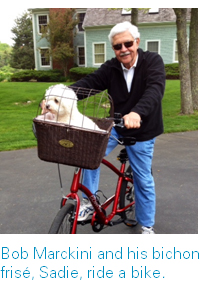 For those who have already experienced a heart attack, research also indicates that patients with a dog or a cat tend to have better recovery rates. These benefits are thought to be connected with pets' tendency to help reduce or at least control their owners' overall stress levels. Reduced anxiety and stress levels help reduce chronic pain levels.
For those who have already experienced a heart attack, research also indicates that patients with a dog or a cat tend to have better recovery rates. These benefits are thought to be connected with pets' tendency to help reduce or at least control their owners' overall stress levels. Reduced anxiety and stress levels help reduce chronic pain levels.
Get a Tabby if You’re Crabby
Pets are a great way to beat the blues. Not only are they known to offer unconditional love, but they may also give their owners a sense of purpose, which can be crucial for those feeling down in the dumps. Pets also combat feelings of loneliness by providing companionship, which can boost your overall mood and even bring you feelings of joy and happiness.
Read “The 10 Health Benefits of Owning a Pet.”
The Importance of Taking Charge of Your Health
This is the theme of Bob’s book. And hardly a month goes by when this hypothesis isn’t reinforced.
We received a call last month from a dentist who was referred to us by a friend who is a member of our group. This gentleman hadn’t had a physical examination in more than five years. When he did, his PSA was 7.5. He told us his urologist had scheduled him for a biopsy.
He called us because he heard we knew something about proton therapy and if diagnosed with prostate cancer he was interested in proton treatment. He had visited our website, clicked through on all the links, listened to Bob’s interviews and was quite impressed with the treatment. He told us he was pretty certain he had prostate cancer; he was researching his treatment options; and he wanted our perspective on the proton therapy option.
We reminded him that we are not physicians and cannot give medical advice, only our opinion and we asked him a few questions:
“How many PSA tests have you had?” “Only one,” he answered.
“Didn’t your doctor repeat the PSA test to confirm the PSA number or to determine if there was a lab error?” “No.”
“Did your doctor have you try an antibiotic to rule out a prostate infection, such as prostatitis?” Again he answered, “No.”
“Have you had a Free-PSA test to determine the probability of prostate cancer to help make a biopsy decision?” “No.”
“Have you had any of the advanced imaging tests to help determine if there is a 'hot spot' in your prostate?” “No.”
“One last question: By any chance, did your doctor perform a digital rectal exam (DRE) before he drew blood for the PSA test?” His answer was, “Yes.”
Another gentleman called us to learn more about proton therapy. He told us his PSA climbed from 1.3 to 3.1 and his urologist had him scheduled for a biopsy. He, too, had not had a repeat PSA test, and he, too, had a DRE prior to having blood drawn for his PSA test.
We suggested to both that they get a second opinion before subjecting themselves to an invasive biopsy and encouraged them to read Bob’s book.
These are frightening stories, and they are not unique. We’ve heard stories like these many times over the past 15 years.
What’s the message?
Take control of your health. Ask questions. Get second and third opinions. Search the Internet. Read books. Challenge your doctor. A good doctor will welcome the challenge as well as a second and third opinion.

Hail to Kale!
An article on The World’s Healthiest Foods website states that there’s a lot to learn about the health benefits of kale. Below is a list of the newly uncovered benefits of this hardy green, referred to by some as a “superfood:”
- Steaming kale provides special cholesterol-lowering benefits. When steamed, the fiber-related components in the vegetable bind together better with bile acids in the digestive tract. Because of this, it’s easier for bile acids to be excreted, resulting in lowered cholesterol levels. Raw kale also has cholesterol-lowering benefits, just not as much.
- It has been known that kale has some risk-lowering cancer benefits; and the list has recently extended to at least five additional types of cancer: bladder, breast, colon, ovary, and prostate. Isothiocyanates (ITCs) made from glucosinolates in kale play a primary role in achieving these risk-lowering benefits.
- Kale is now recognized as providing comprehensive support for the body’s detoxification system. New research shows that the ITCs made from kale's glucosinolates can help regulate detox at a genetic level.
- Researchers have discovered over 45 different flavonoids in kale. Kale’s flavonoids combine both antioxidant and anti-inflammatory benefits in a way that gives kale a leading dietary role with respect to avoidance of chronic inflammation and oxidative stress.
There’s a lot more to learn about kale.
Series: Top 20 Most Common Health Questions (and Answers)
Last summer, we began a series on the top 20 most common health questions (and answers) from Business Insider Magazine. Below is the twelfth question on the list.
Is drinking fruit juice as good for you as eating fruit?
Short answer: No. Calorie for calorie, whole fruit provides more nutritional benefits than drinking the pure juice of that fruit. That's because when you liquefy fruit, stripping away the peel and dumping the pulp, many ingredients like fiber, calcium, vitamin C, and other antioxidants are lost.
For comparison, a 5-ounce glass of orange juice that contains 69 calories has 0.3 grams of dietary fiber and 16 milligrams of calcium, whereas an orange with the same number of calories packs 3.1 grams of fiber and 60 milligrams of calcium. That’s 10 times as much fiber and four times as much calcium.
the book
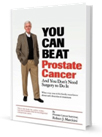
We have 211 reader reviews on Amazon—more than any other book in the top 50! Here is an excerpt from what one reader recently had to say:

Prostate Cancer Questions? Save time—start here.
—L. Hagemann
If you value the quality of your life and a dry pair of pants, give this book a read. Marckini gives us a present in this time-saving primer on how to beat prostate cancer without surgery
Did you read Bob's book? Was it helpful to you?
Please help us educate others about proton therapy. If you found Bob’s book to be helpful in making your proton treatment decision, please post a review on Amazon.
Once you are logged into your Amazon account, click here and click the “Create your own review” button. NOTE: Reviews can be just a few sentences—it only takes a few minutes. And, don’t forget to rate the book from 1 to 5 stars!
Don’t have an Amazon account? No problem. Sign up here—it’s free.
More Information/Where to Buy the Book
- Paperback: $19.00
- Kindle: $9.99
- Nook Book: $9.99
- Apple iBook: $9.99
The paperback version of You Can Beat Prostate Cancer is available online at Amazon, Barnes & Noble, and LuLu Press. Proceeds help fund BOB efforts and support proton therapy research.
Ask about our bulk discount for hard copy books for anyone interested in spreading the word about proton therapy: [email protected]
odds & ends
Estate Planning Hints
BOB Member Ron Hendricks is Director of Gift Planning for Trinity Western University. He regularly copies us on his “News from Ron” mailings, which are helpful hints to the readers of his newsletters. We have found Ron’s suggestions to be timely and beneficial. With his permission we will periodically be sharing some of his wisdom with our membership. Here is the first:
The state will do what?
The state you live in has a last will and testament ready for you. If you choose to ignore the opportunity to write your own personal will, your state will do your work for you. They will choose the guardians for your children; they will also decide where your assets will go. And you can be very sure that none of your assets will go to God’s kingdom or any charity of your choice. Many people create a first will in order to appoint a guardian to care for minor children in their absence. A will is also the place where you appoint an executor to manage the administration of your estate.
The benefit of a will is that it is revocable, which means that you can make changes at any time during your lifetime as well as direct the distribution of your assets. However, there are many reasons why you might choose to create a living trust instead. Here are six reasons for creating a living trust:
- Preserve Privacy: A will is a public document everyone can read, whereas a trust is private.
- Avoid Probate: Unlike a trust, a will is subject to probate which can be time consuming and costly.
- Property Management: Unlike a will, a living trust provides for a trustee to manage your property.
- Asset Protection: A trust can be created with provisions to protect your assets.
- Capacity Planning: A trust enables you to plan in the event you can no longer care for yourself.
- Dependents: A trust allows you to distribute income to children and care for special needs.

Did You Know?
Facts about New York City
- There are more Irish people in New York City than in Dublin, Ireland; more Italian people in New York City than in Rome, Italy; and more Jewish people in New York City than in Tel Aviv, Israel.
- The term “The Big Apple” was coined by touring jazz musicians of the 1930s who used the slang expression 'apple' for any town or city. Therefore, to play New York City is to play the big time—The Big Apple.
- There are 6,000 miles of roads in New York City. When they have a snowstorm, they are plowing enough roadways to run from Boston to Los Angeles and back.
Spread the Word on the Highway
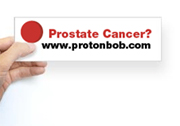
Build awareness about protons with a BOB bumper sticker. Just send $6.00 to Bob Hawley: P.O. Box 45, Mt. Angel, OR 97362 and he’ll mail you one. Or, e-mail Bob at [email protected] .
All proceeds go to the Robert J. Marckini Endowed Chair for proton therapy research at LLUCC.
on the lighter side
Last Month’s Brain Teaser/Riddle
Three boxes are all labeled incorrectly, and you must get the labels right. The labels on the boxes read as follows:

To gain the information you need in order to move the labels to the correct boxes, you may remove a single item from one of the boxes. You may not look into the boxes, nor pick them up and shake them.
Can this be done? If so, how? If not, why not?
Answer: Remove an item from box 3, which is labeled “Nails & Screws.” We know box 3 does not have nails and screws, so it must have either all nails or all screws. The item tells you what label to put on box 3.
Move the nails and screws label to the box labeled with the other item, and its label to the remaining box.
Example: If you remove a nail from box 3. Move the label “Nails” from box 1 to box 3.
You can't move the “Nails and Screws” label to box 1: that would be a swap, leaving the same “Screws” label on box 2. All three labels must be corrected.
Instead, move the “Nails & Screws” label to box 2 and the “Screws” label to box 1. Simple, right?
Winner: BOB member John Shea (Cary, NC) has been writing in with answers to our brain teasers for years. He seems to always come in second or third. Finally last month, we received the following response from John when we congratulated him on winning the January/February brain teaser, “Wow! I finally won!”
John was treated with proton therapy for his prostate cancer in 2008 at the now-closed IU Health Proton Therapy Center in Bloomington, Indiana. Since treatment, John says he feels fine and keeps in shape by working out six days a week and walking his yellow lab, Angel.
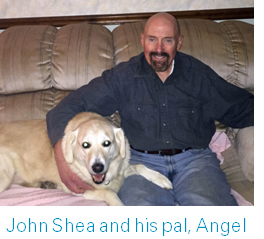
John is married with two daughters and two grandsons. He retired from IBM in 1996 after 30 years of service before he worked as an independent contractor to fix Y2K bugs until 2000. Since then, John works for SECU, the second-largest credit union in the U.S. as a senior programmer. “I’m planning on my second retirement in August of 2016 when I will turn 70,” John says.
We’re happy your persistence finally paid off, John—your signed copy of Bob’s book is on the way!
New Brain Teaser/Riddle
Here’s another easy one:
When it’s light, I’m dark. When it’s dark, I’m gone. When I’m gone for good, so are you. What am I?
Answer next month: The first to send an email to [email protected] with the correct answer will receive a signed copy of Bob’s book.

A.A.A.D.D.—Know the Symptoms
(Age-Activated Attention Deficit Disorder)
Thank goodness there’s a name for this disorder. This is how it manifests:
I decide to water my garden. As I turn on the hose in the driveway, I look over at my car and decide it needs washing. As I start toward the garage, I notice mail on the porch table that I brought up from the mailbox earlier. I decide to go through the mail before I wash the car.
I lay my car keys on the table, put the junk mail in the garbage can under the table, and notice that the can is full. So, I decide to put the bills back on the table and take out the garbage first. But then I think, since I’m going to be near the mailbox when I take out the garbage, I may as well pay the bills first.
I take my checkbook off the table, and see that there is only one check left. My extra checks are in my desk in the study, so I go inside the house to my desk where I find the cup of tea I’d been drinking. I’m going to look for my checks, but first I need to push the cup aside so that I don’t accidentally knock it over. The tea is getting cool, and I decide to put it in the microwave to warm it up. As I head toward the kitchen with the cup, a vase of flowers on the counter catches my eye—they need water.
I put the cup of tea on the counter and discover my reading glasses that I’ve been searching for all morning. I decide I better put them back on my desk, but first I’m going to water the flowers. I set the glasses back down on the counter, fill a container with water and suddenly spot the television remote. Someone left it on the kitchen table.
I realize that tonight when I go to watch television, I’ll be looking for the remote, but I won’t remember that it’s on the kitchen table, so I decide to put it back in the den where it belongs, but first I’ll water the flowers. I pour some water in the flowers, but quite a bit of it spills on the floor. So, I set the remote back on the table, get some paper towels and wipe up the spill. Then, I head down the hall trying to remember what I was planning to do.
At the end of the day: The car isn’t washed, the bills aren’t paid, there is a cold cup of tea sitting on the counter, the flowers don’t have enough water, there is still only one check in my check book, I can’t find the remote, I can’t find my glasses, and I don’t remember what I did with the car keys.
Then, when I try to figure out why nothing got done today, I’m really baffled because I know I was busy all day and I’m really tired. I realize this is a serious problem, and I’ll try to get some help for it, but first I’ll check my email.
The Perfect Husband
Several men are in the locker room of a golf club. A cell phone on a bench rings and a man engages the hands-free speaker function and begins to talk. Everyone else in the room stops to listen.
Man: “Hello?”
Woman: “Hi honey, it’s me. Are you at the club?”
Man: “Yes.”
Woman: “I’m at the mall and found this beautiful leather coat. It’s $2,000. Can I buy it?”
Man: “Sure, go ahead.”
Woman: “I also stopped by the Lexus dealership and saw the new models. I saw one I really liked—it’s $90,000”
Man: “Okay, but for that price you should get all the options.”
Woman: “Great! Oh, and one more thing—I was just talking to Joan and found out that the house I wanted last year is back on the market. They’re asking only $980,000.”
Man: “Well, then go ahead and make an offer of $900,000. They’ll probably take it. If not, we can go the extra $80,000 if it’s what you really want.”
Woman: “Okay. I’ll see you later! I love you so much!”
Man: “Bye! I love you too.”
The man hangs up. The other men in the locker room are staring at him, wide-eyed.
The man turns and asks, “Anyone know whose phone this is?”
Quote of the Month
“Rough diamonds may sometimes be mistaken for worthless pebbles.”
—Thomas Browne
final thought
The Stranger
A few years after I was born, my Dad met a stranger who was new to our small town. From the beginning, Dad was fascinated with this enchanting newcomer and soon invited him to live with our family. The stranger was quickly accepted and was around from then on.
As I grew up, I never questioned his place in my family. In my young mind, he had a special niche. My parents were complementary instructors: Mom taught me good from evil, and Dad taught me to obey. But the stranger … he was our storyteller. He would keep us spellbound for hours on end with adventures, mysteries, and comedies.
If I wanted to know anything about politics, history, or science, he always knew the answers about the past, understood the present, and even seemed able to predict the future! He took my family to the first major league ball game. He made me laugh, and he made me cry. The stranger never stopped talking, but Dad didn’t seem to mind.
Sometimes, Mom would get up quietly while the rest of us were shushing each other to listen to what he had to say, and she would go to the kitchen for peace and quiet (I wonder now if she ever prayed for the stranger to leave.).
Dad ruled our household with certain moral convictions, but the stranger never felt obligated to honor them. Profanity, for example, was not allowed in our home—not from us, our friends, or any visitors. Our long-time visitor, however, got away with four-letter words that burned my ears and made my dad squirm and my mother blush.
My Dad didn’t drink alcohol but the stranger encouraged us to try it on a regular basis. He made cigarettes look cool, cigars manly, and pipes distinguished.
He talked freely (much too freely!) about sex. His comments were sometimes blatant, sometimes suggestive, and generally embarrassing.
I now know that my early concepts about relationships were influenced strongly by the stranger. Time after time, he opposed the values of my parents, yet he was seldom rebuked and NEVER asked to leave.
More than 60 years have passed since the stranger moved in with our family. He has blended right in and is not nearly as fascinating as he was at first. Still, if you could walk into my parents' den today, you would still find him sitting over in his corner, waiting for someone to listen to him talk and watch him draw his pictures.
His name? We just call him “TV.”
Low PSAs to all,
Bob Marckini and Deb Hickey
You can download this month’s BOB Tales in PDF format to your computer by “right-clicking” (“control-clicking” on Mac) and going to the “Save Target As… ” option on the menu that pops up.
NO MEDICAL ADVICE: Material appearing here represents opinions offered by non-medically-trained laypersons. Comments shown here should NEVER be interpreted as specific medical advice and must be used only as background information when consulting with a qualified medical professional.
